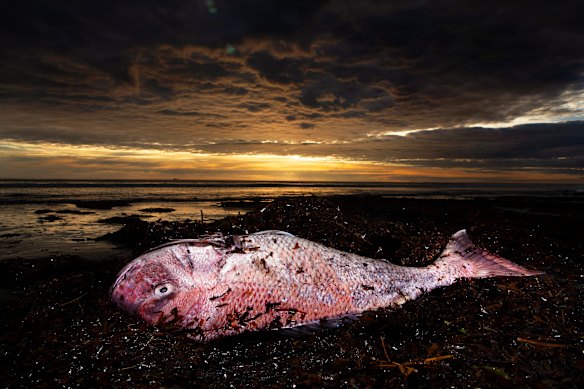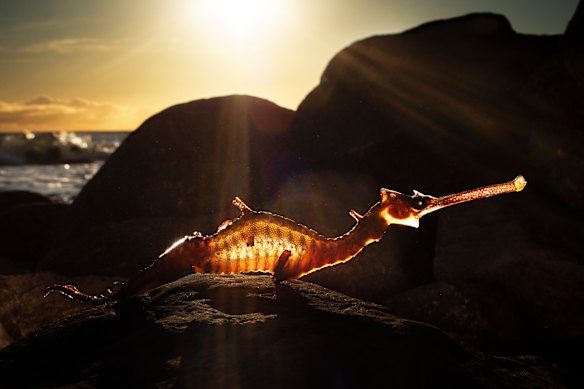Editorial
Government all at sea on toxic algal bloom
The Albanese government’s refusal to declare South Australia’s algal bloom a natural disaster is a curious echo of Scott Morrison’s feeble excuse that he did not hold the hose during the Black Summer bushfires of 2019-20, a comment that both captured federal inaction in the face of catastrophe and helped torch his career.
Four months ago, an algal bloom primarily caused by the microalgae Karenia mikimotoi was spotted in the waters off the Fleurieu Peninsula south of Adelaide, and has spread west to the Yorke Peninsula and east into the environmentally sensitive Coorong and across the mouth of the Murray River. Thousands of kilometres of South Australian beaches have been littered with dead sharks, rays, fish, dolphins and seals. Tourism has been devastated and the fishing industry is reeling. There are concerns, too, that prevailing currents could carry the bloom into Victorian or West Australian waters.

A washed- up snapper at North Haven Beach.Credit: Narelle Autio @chillioctopus
Going down 20 metres beneath the waves, the algal bloom is already almost double the size of the ACT and may be the biggest to hit Australia’s coast. The South Australian government, scientists and environmental groups called for help early, but Canberra remained distracted by the federal election until this week, when federal Environment Minister Murray Watt announced a $14 million assistance package, but resisted calls to declare a natural disaster.
Watt admitted the bloom was a “very serious environmental event” but it was wholly within South Australian-controlled waters and therefore did not meet the definition of a natural disaster. “The Commonwealth natural disaster framework considers events like floods, cyclones and bushfires to be natural disasters, and if they are declared as such, they attract a range of funding,” Watt said.
These are nearly always land-based natural disasters, and while past governments thought the sea out of bounds, climate change and pollution suggest the definition needs updating. Such blinkered vision no longer passes the pub test. Imagine the uproar if a similar-sized toxic algal bloom hit Sydney’s beaches, with the carcasses of fish and marine animals lining the sand and people prevented from going into the water.

A dead seahorse at Marino Rocks.Credit: Narelle Autio @chillioctopus
Scientists believe the bloom may have resulted from a combination of nutrient-rich water from 2022 floods that flowed through the Murray-Darling system, the current SA drought, and a marine heatwave last September that pushed sea temperatures 2.5 degrees above normal.
While the funding announced by Watt is welcome, most of it will probably go towards helping fishers and tourist operators, with money for research a distant afterthought. While coral reefs attract attention and funding, researching the algal bloom in the Great Southern Reef system along the bottom of Australia is expensive science, not least because of the depth of the water.
Canberra’s reluctance to recognise the poisoning of South Australian waters as a natural disaster is a potential national disaster sheltering behind a legal decision. Scientifically, the scale of the bloom, potential cross-jurisdictional reach and multi-year legacy effects represent the same threats as bushfires and floods that routinely trigger federal interventions and merit the same sense of urgency.
Bevan Shields sends an exclusive newsletter to subscribers each week. Sign up to receive his Note from the Editor.